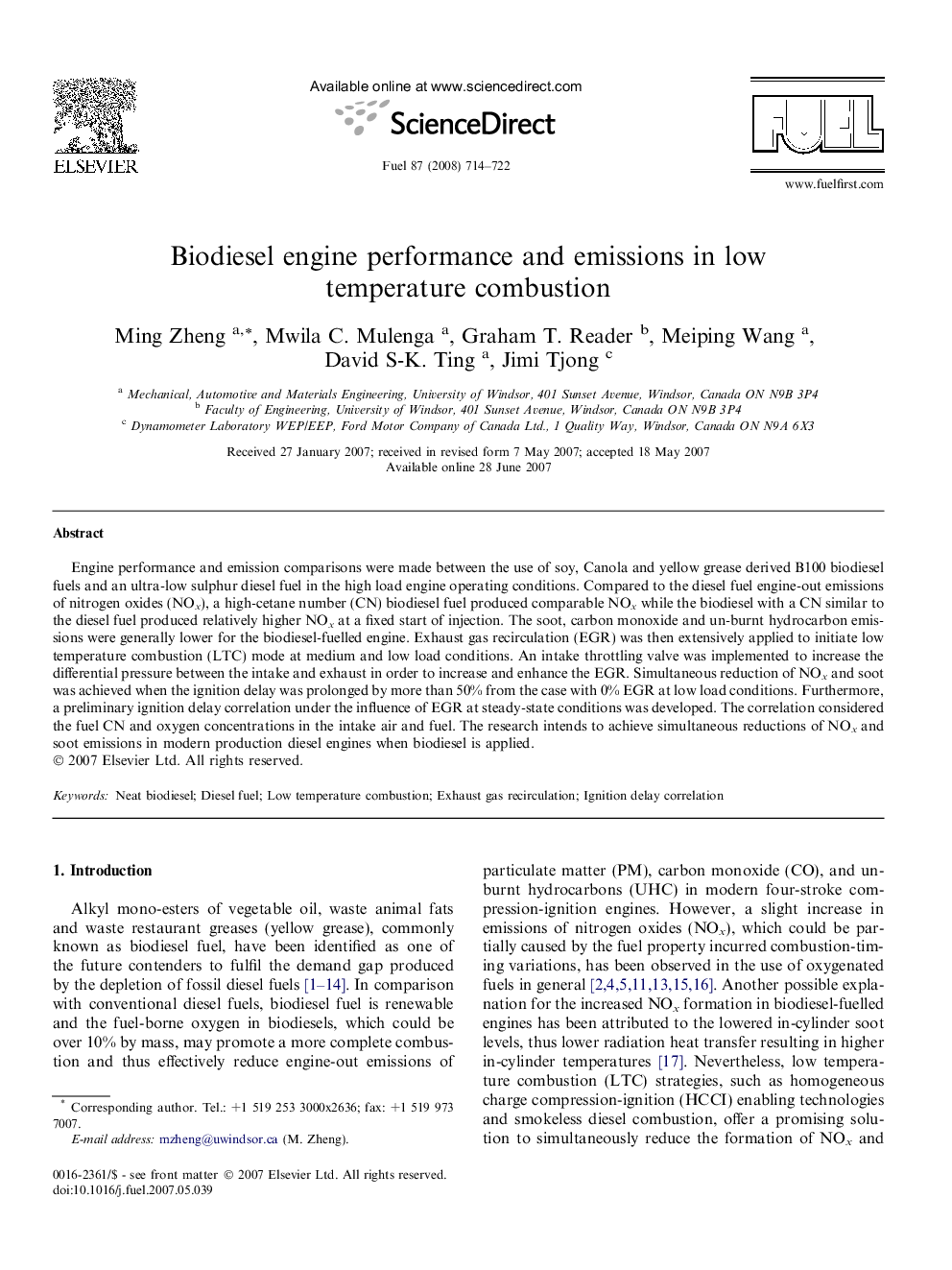| Article ID | Journal | Published Year | Pages | File Type |
|---|---|---|---|---|
| 207749 | Fuel | 2008 | 9 Pages |
Engine performance and emission comparisons were made between the use of soy, Canola and yellow grease derived B100 biodiesel fuels and an ultra-low sulphur diesel fuel in the high load engine operating conditions. Compared to the diesel fuel engine-out emissions of nitrogen oxides (NOx), a high-cetane number (CN) biodiesel fuel produced comparable NOx while the biodiesel with a CN similar to the diesel fuel produced relatively higher NOx at a fixed start of injection. The soot, carbon monoxide and un-burnt hydrocarbon emissions were generally lower for the biodiesel-fuelled engine. Exhaust gas recirculation (EGR) was then extensively applied to initiate low temperature combustion (LTC) mode at medium and low load conditions. An intake throttling valve was implemented to increase the differential pressure between the intake and exhaust in order to increase and enhance the EGR. Simultaneous reduction of NOx and soot was achieved when the ignition delay was prolonged by more than 50% from the case with 0% EGR at low load conditions. Furthermore, a preliminary ignition delay correlation under the influence of EGR at steady-state conditions was developed. The correlation considered the fuel CN and oxygen concentrations in the intake air and fuel. The research intends to achieve simultaneous reductions of NOx and soot emissions in modern production diesel engines when biodiesel is applied.
